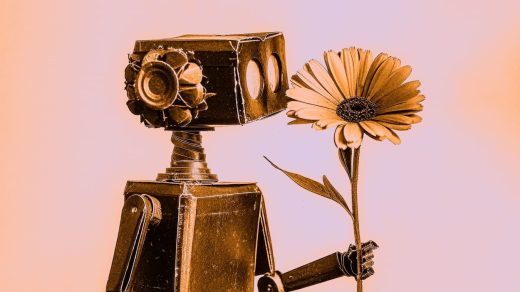The creative chasm between human and AI
AI appears incapable of generating a dad joke my family will tolerate. In fact, AI-generated content only seems to exacerbate a joke’s groaning reception. I sit, pleading with ChatGPT to deliver a better knock-knock joke to please my teenage kids, but it fails to live up to their adolescent standards.
Neither has AI delivered the next great piece of art, hit movie, breakout TV show, nor the advertising campaigns that bring them to market. It begs the question: Has AI ever generated anything of value, save for the possibility of a more productive future?
As machines gradually extend their mechanical influence into the creative arts, here’s three points that suggest we squishy humans will retain creative control.
Emotions
ChatGPT, Midjourney, or Runway have never made me laugh (well, intentionally). Nor has generative AI made me cry, stirred feelings of nostalgia or love, or inspired me to action. That’s because to convey emotions, you have to understand them.
What is and isn’t funny is something uniquely known to humans. Comedy is a delicate dance, a mingling of wit and timing, cultural norms, appealing to known knowns and breaking them. AI can generate the absurd, throwing unexpected twists into the mix when prompted. Yet, constructing a premise and punchline that hits the sweet spot requires a human’s sharp wit and pen.
In music, AI may boast an algorithmic arsenal capable of curating playlists, but ask it why a specific soundtrack tugs at the heartstrings, and you’ll be met with a robotic stare. It can suggest songs as a starting point. However, determining which song to accompany a visual in an ad, movie, trailer, or TV show to elicit an emotional force remains the work of a creative.
“Content” is more than the pixels and megabytes of audio and video that make it up. It’s about the meaning behind the work that can move a person to an emotion or action. Whether visual, auditory, or textual, generative AI lacks emotional resonance and requires human creativity, iteration, and an infusion of meaning.
Mentorship
Discovering what you’re good at takes time. I discovered graphic design after I (almost) failed math. Those types of discoveries occur on the cutting room floor, overseen by a more experienced guide. Assistant editors traditionally sift through hundreds of thousands of hours of footage to set up an edit and determine the best shots. Junior copywriters write thousands of lines of bad copy to master the written word. Newbie designers throw out hundreds of logos before producing the “right” solution.
Those trials build the mental muscle required for creative growth. AI can organize data and generate output faster than humans but can’t teach taste. Aspiring creatives should beware of using AI as a creative crutch rather than a productivity assistant. People learn taste from the curious act of putting new things in their mouths, chewing on them, digesting, and seeing how they feel.
The journey
Creativity is a wild, unpredictable journey.
Recently, just for fun, I asked ChatGPT to suggest cues for a dystopian ’90s movie trailer we were working on. The results were logical and reasoned, but devoid of the nuance that makes the perfect song, for the perfect ad. As a productive co-pilot, AI can shine. A creative’s worst enemy is a blank page staring back at them. As a productive assistant, AI magically transforms the blank page into multiple starting points. We have used Midjourney and Runway to create visual mockups in a fraction of the time to show clients an intended direction. Copywriters should employ AI to assist in word choice, starting points, and phrases.
The danger here is leaning on AI too hard. The model crumbles under the emotional weight needed to move people. No algorithm can replicate the sentimentality of a song your mom played on a rainy road trip or the personal experience of standing up to a schoolyard bully—a creative chasm that separates man from machine.
We should ask ourselves, what are we producing all this for? Are we robots producing for robot consumption, or humans using machines to make our work more productive, efficient, and impactful? Moving humans, emotionally or commercially, will always require a human touch. Understanding emotions and articulating the why behind a story imbues any creative endeavor with artistic value.
AI will forever change how we produce new work. It will introduce efficiencies in organizations, workflows, and ideation. AI provides a productive starting point, a scrapbook of ideas, trained on terabytes of other creative works, yet it’s not the final destination. That’s for humans to decide.
Michael McIntyre is CEO of MOCEAN.
(51)



